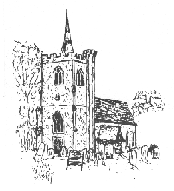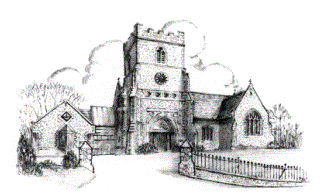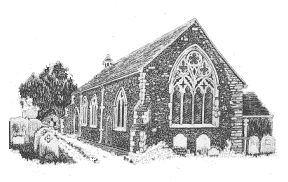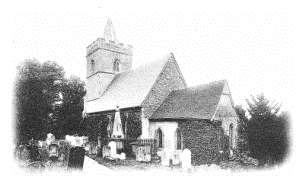The Benefice covers three villages with four churches, and is located in east Hertfordshire between Ware and Hoddesdon. We are 20 miles NE of London alongside the London-Cambridge road (A10). Stanstead Abbots is on the east bank of the river Lea, whilst Stanstead St Margarets and Great Amwell are on the west bank. Ware is to the north, Harlow to the east, and Hoddesdon to the south. The villages are mentioned in the Domesday Book (1086) and were strategic long before that, due to the ford, then bridge, over the Lea. There are farms surrounding the villages, and the Lea valley, which has been a source of gravel, has bird sanctuaries and a marina.
All four churches are listed Grade II. St Andrew’s, Stanstead Abbots was built in 1881, but the others all date from the 12th Century and have many interesting features.
Stanstead Abbots
The village has been based on maltings in the past, but now has a variety of small businesses, from jewellers to architects to electricians, based here. There is also a 200-year old High Street with chemist, Post Office, butcher, baker’s shop, greengrocer, hairdressers, as well as restaurants and pubs etc. There are several listed buildings, including the Old Clock House at the end of the High Street, which used to be a Grammar School in Tudor times. The Lea is navigable with a riverside walk from London to Ware, and we have a marina. There is a church primary school linked with St Andrew’s.
 |
The original parish church of St James is outside the village (please see the links page for their own informative website), next to Stansteadbury, and is maintained by the Churches’ Conservation Trust ably helped by the Trower family. It is still used for worship occasionally, and is an excellent concert venue despite the tall box pews! St Andrew’s in Cappell Lane was built in 1881 and is now the parish church.
The Friends of St James website: https://stjamesoldchurch.org.uk |
 St Andrew’s is evangelical and benefits from several links with missions overseas. All Nations Christian College is in the parish, with students from all around the world. St Andrew’s is evangelical and benefits from several links with missions overseas. All Nations Christian College is in the parish, with students from all around the world. |
Stanstead St Margarets

This village started life called Thele or Stanstead Thele. The Church of the Blessed Virgin Mary is recorded c.1300. In 1316 a college of four priests was set up to pray for the Lord of the Manor, his wife and his patron the Duke of Essex. His wife’s name was Margaret, who had inherited the title, and so the village became known as Margaret’s Thele. The Chantry built onto the church of St Mary to house the college is thought to have been dedicated to St Margaret, as the village eventually became known as Stanstead St Margarets. The chantry was closed during the 1400s and demolished, but the church is still used for worship. The organ was originally a chamber organ, but was converted to accept barrels in c.1851. Four of the barrels are still in existence and are used for demonstration purposes to visitors. It is believed that this is the only remaining William Allen barrel organ in working order. There are also 52 heads of people and animals carved beside each window. The main income of the village was from farming and market gardening, however the greenhouses are gradually making way for more housing. There is still a station, with half-hourly trains to Hertford and London Liverpool Street. |
Great Amwell

The part of the village on the top of the hill has a wonderful view across the Lea valley. Just below the church there is the New River, constructed by Hugh Myddleton in 1609 to carry sweet water from the wells at Ware and Amwell to Sadlers’ Wells in London, which it still does today. The well-known architect Milne designed the picturesque pool with it’s islands below the church, the setting for the singing of madrigals every midsummer. |